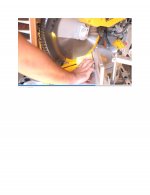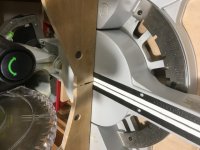Just an update on using two clamps simultaneously on the Kapex 120.
I have purposely carried on using two clamps whilst cutting long lengths of flat square hardwood only. Mainly because of this thread and what other users have written.
There has been no issues or kick back, even one of my employees has adopted the same method, without issues.
We agreed this should only be tried with completely flat stock.
Ironically, the other day, I needed to trim the lengths on some walnut beads and trims. Some had to be mitred also, so the axillary fences were removed when cutting some angles.
The larger pieces were clamped, and the small pieces held by my left hand.
Near the end of finishing, I had kick back, the usual sickening bang, followed by the hope that the saw isn’t damaged.
I checked the blade guard and surrounding area, and apart from a piece of walnut loose up in the guard, all seemed fine.
I carried on, and noticed the extraction was not as good as usual.
When I finished, I noticed a hole about 8-9mm in the angled dust port. A piece of walnut obviously hit it directly.
I have done a temporary repair with black silicone, whilst waiting for a replacement to arrive.
Although as I mentioned a few times on here, I look after my tools, I don’t baby them but, was quite upset that the saw took a bit of damage but, thankful it wasn’t a lot worse.
So, the next day, it was back to cutting flat hardwood with two clamps, all good.
Make of it what you will



